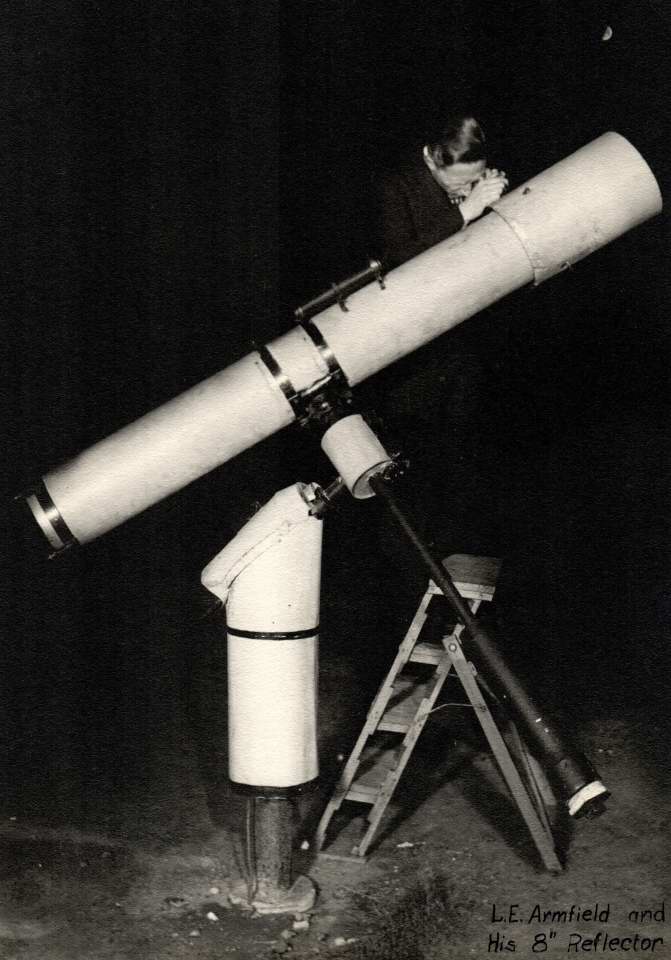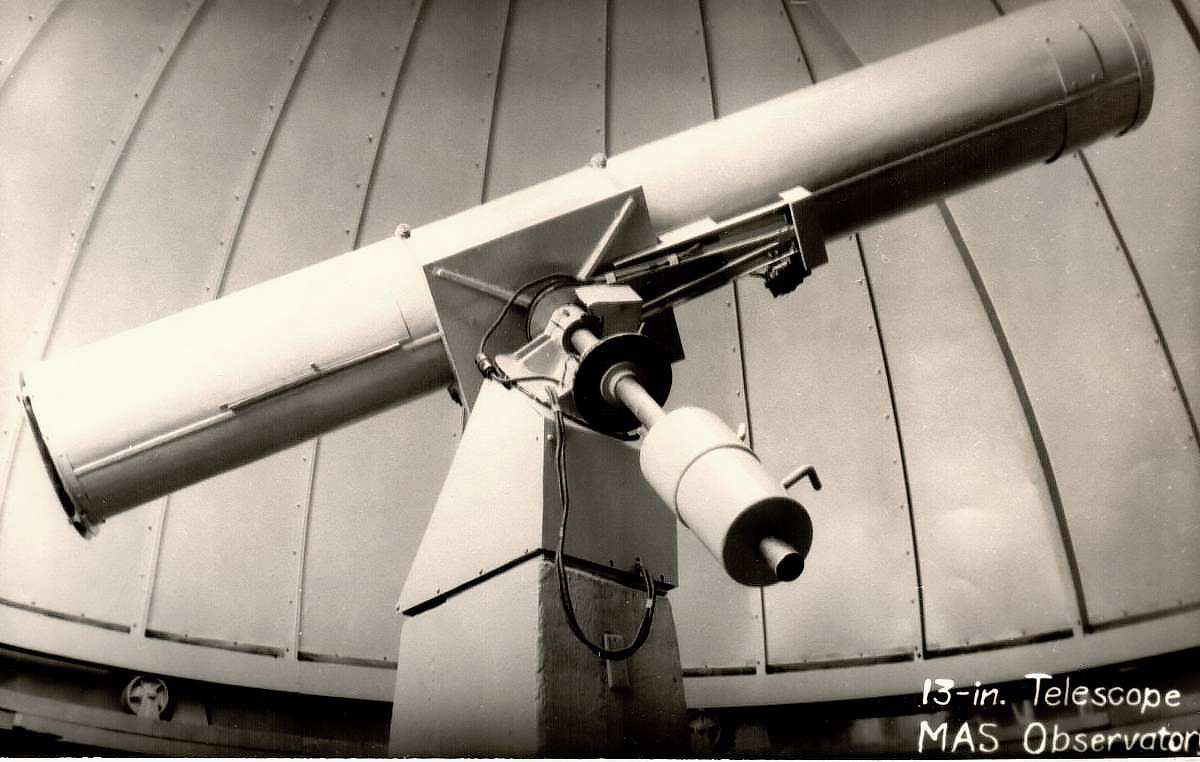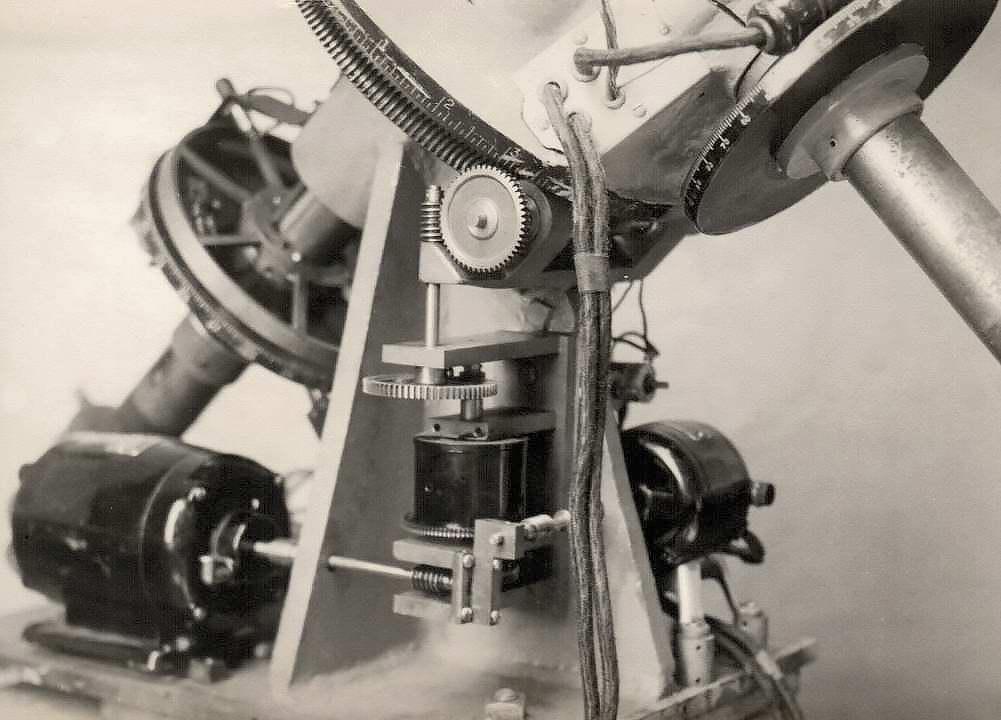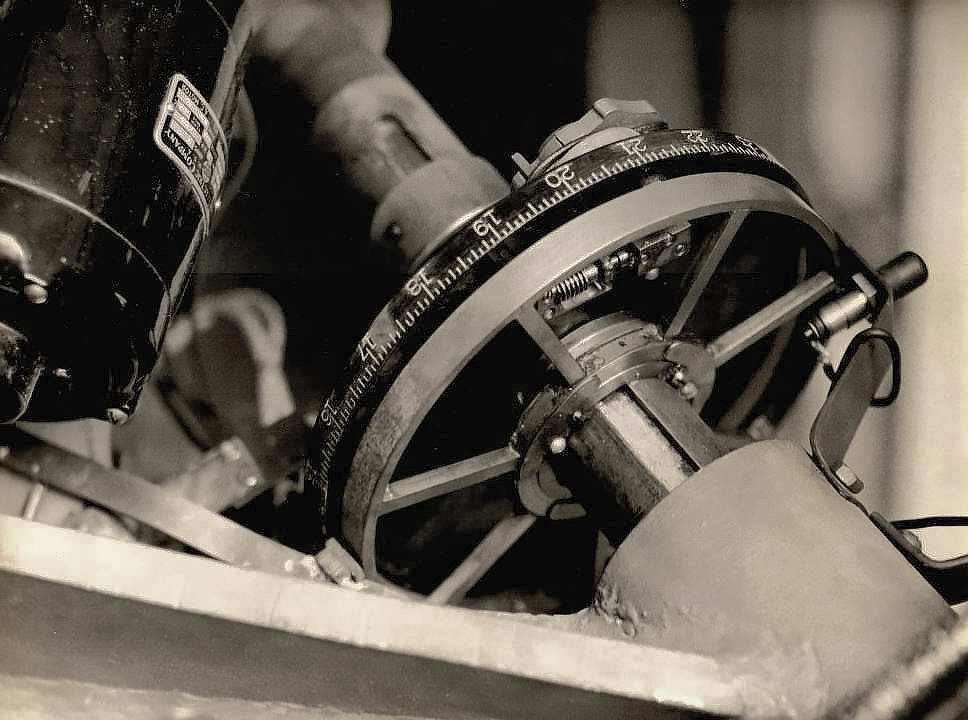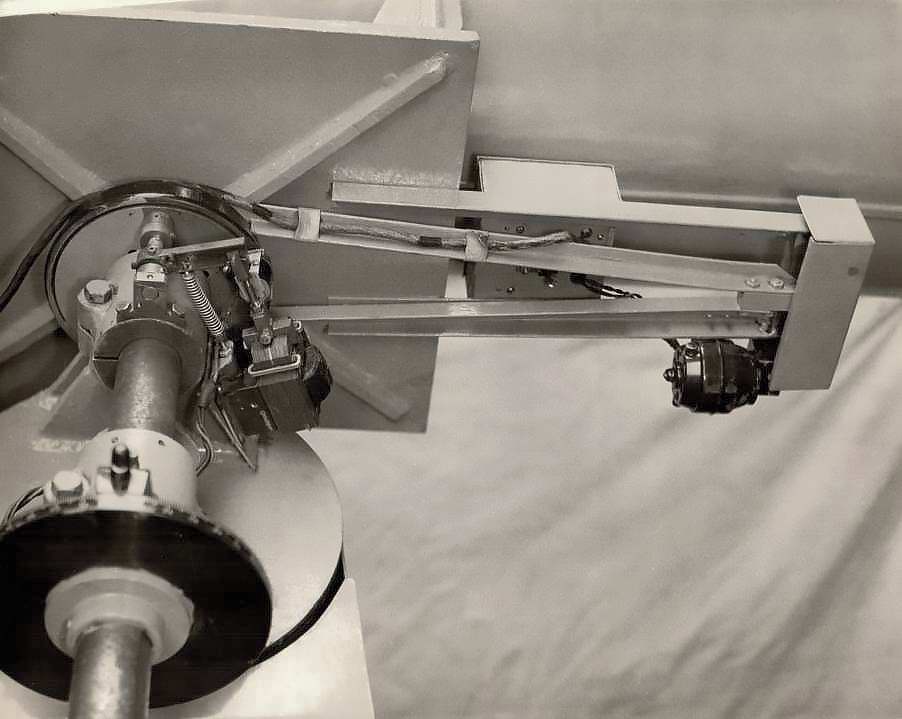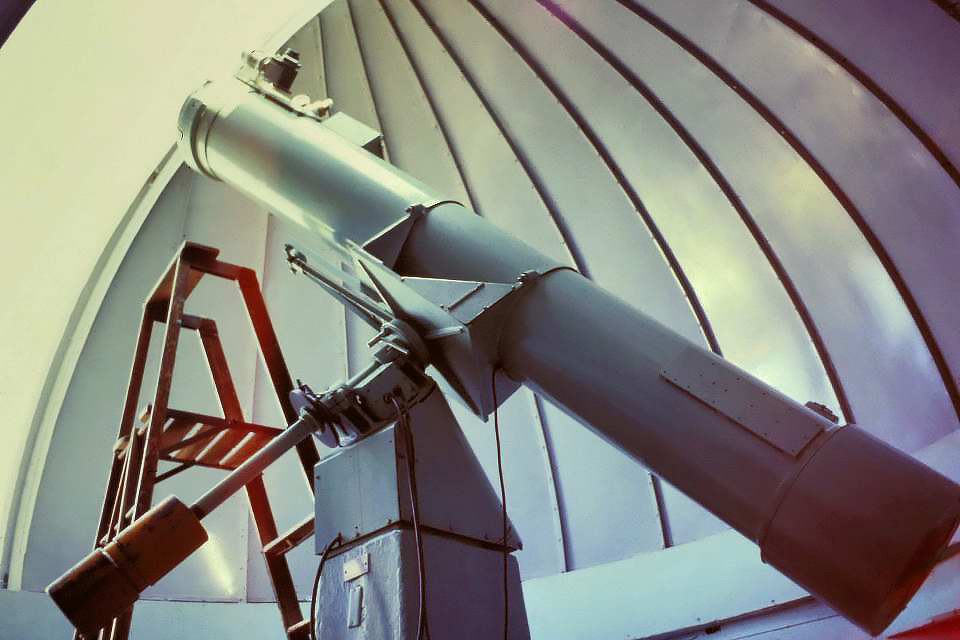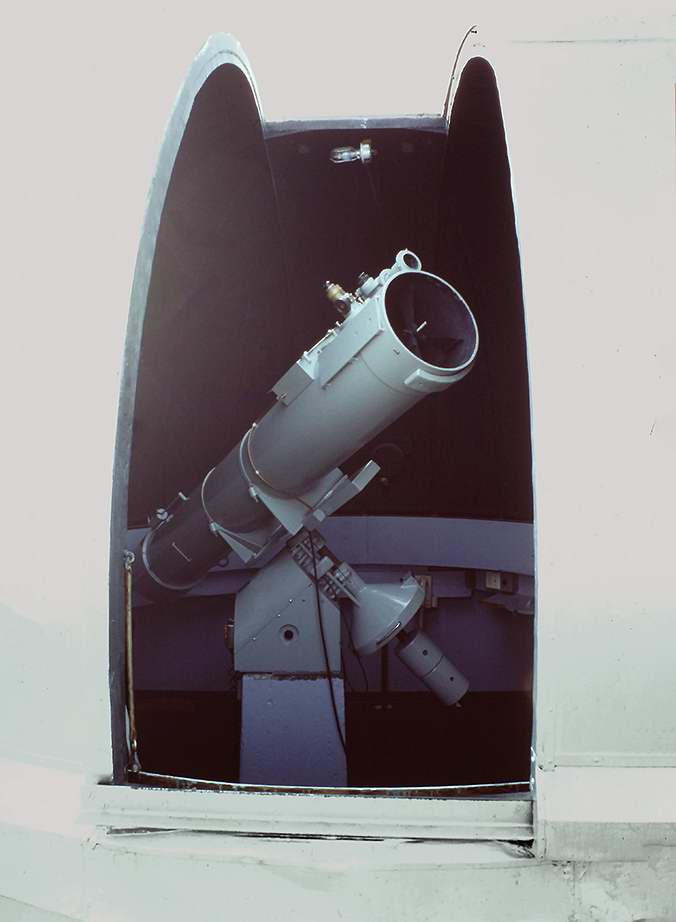History of the A-Scope
At the Beginning - 1934
16 months after the formation of the Milwaukee Astronomical Society (MAS) in 1934, the founder of the MAS, Luverne Armfield, was offered the use of a 13-inch plate glass mirror and secondary. This offer was extended from Harvard Observatory through the AAVSO. At that time the disk of glass was not yet figured and had a hole as it was obviously intended to be for a Cassegrain-type reflector. As part of the offer they would grind the glass to Armfield's specifications and aluminize it. The simple stipulation was that the Armfield/MAS could use it as long as he/we pursued the study of variable stars.
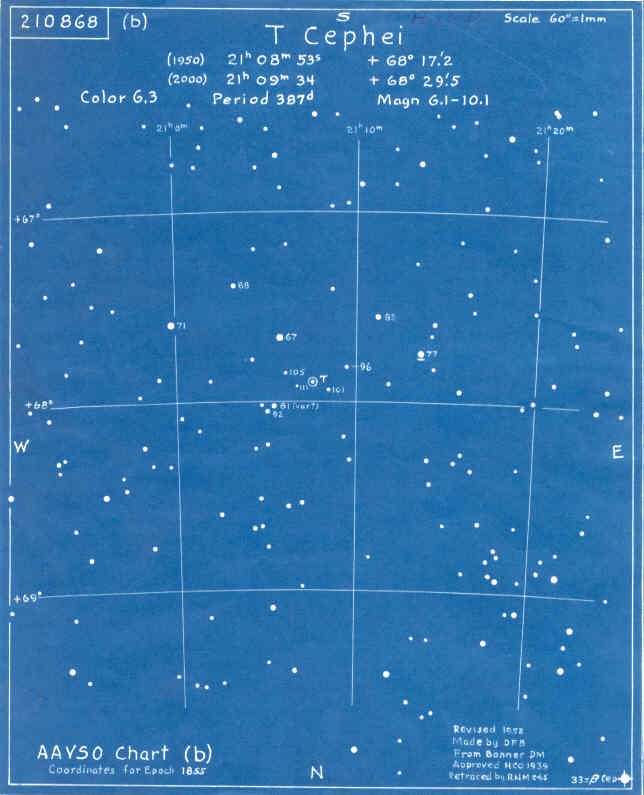 Luverne Armfield is considered the founder of the MAS. He was instrumental in its
creation, putting an ad in the Milwaukee Journal of 1932 for an organization
meeting at his home in West Allis. As a result of that meeting, the MAS was
formed with 18 charter members. Immediately his backyard, already the
home of 8 in and 10 in reflectors, became the gathering spot for the
fledgling society. It would literally become the first location of the
Milwaukee Astronomical Society Observatory. At the time Armfield was an
early adopter of doing scientifically useful astronomy. He observed meteors
and variable stars. The variable star observing was done for the AAVSO and
his observer code was "A". This is not because he was the first, but because
he was the first observer with a last name that started with the letter A.
With the formation of the MAS and the meetings in his backyard, Armfield got
a lot of members to try variable star observing. This, of course, did not
escape the notice of the AAVSO! This is why they made this generous offer.
Luverne Armfield is considered the founder of the MAS. He was instrumental in its
creation, putting an ad in the Milwaukee Journal of 1932 for an organization
meeting at his home in West Allis. As a result of that meeting, the MAS was
formed with 18 charter members. Immediately his backyard, already the
home of 8 in and 10 in reflectors, became the gathering spot for the
fledgling society. It would literally become the first location of the
Milwaukee Astronomical Society Observatory. At the time Armfield was an
early adopter of doing scientifically useful astronomy. He observed meteors
and variable stars. The variable star observing was done for the AAVSO and
his observer code was "A". This is not because he was the first, but because
he was the first observer with a last name that started with the letter A.
With the formation of the MAS and the meetings in his backyard, Armfield got
a lot of members to try variable star observing. This, of course, did not
escape the notice of the AAVSO! This is why they made this generous offer.
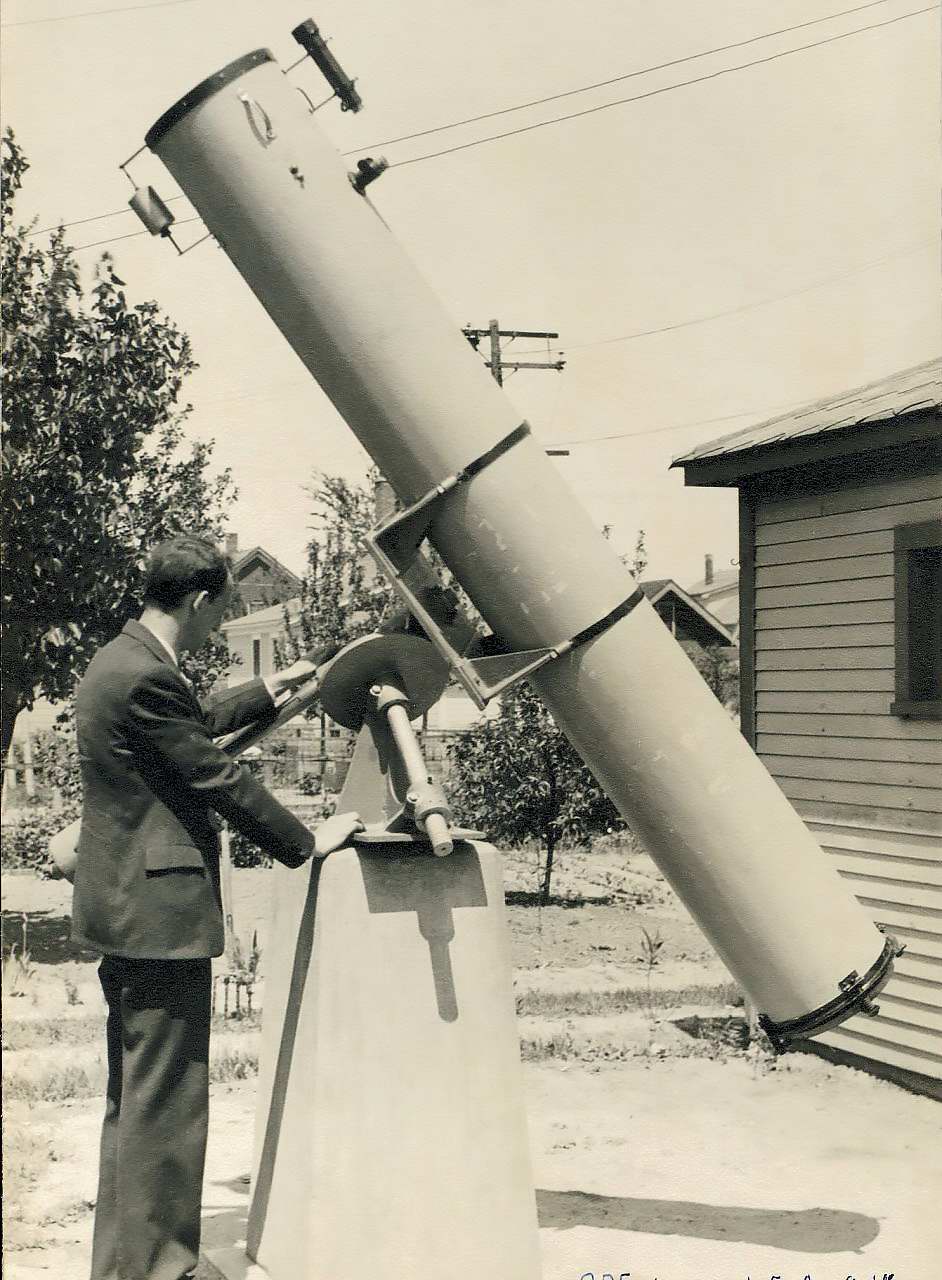 The offer was accepted, but there was a lot of work ahead. A telescope
would have to be made and it would have be be permanently mounted due to the
size, and Armfield's new friends in the MAS would help him make it. They
chose a focal length of 102 inches, but it eventually became figured at
102.5 inches, making it f/7.88. The participating members were M. Anderson,
Ray Cooke, M.M. Feinsilber, Art Fotsch, Carl Frister, C. Fischer, R. Haertel,
Ed Halbach,
Joe Loepfe, William
Liebscher, A.L. Peck, and Theo. Thompson. Not to minimize this effort, but
at that time telescopes were simply not available to purchase and even if
they were, no one could afford them. So telescope making was a huge aspect
of the MAS, as it was for any astronomy clubs in that era.
The offer was accepted, but there was a lot of work ahead. A telescope
would have to be made and it would have be be permanently mounted due to the
size, and Armfield's new friends in the MAS would help him make it. They
chose a focal length of 102 inches, but it eventually became figured at
102.5 inches, making it f/7.88. The participating members were M. Anderson,
Ray Cooke, M.M. Feinsilber, Art Fotsch, Carl Frister, C. Fischer, R. Haertel,
Ed Halbach,
Joe Loepfe, William
Liebscher, A.L. Peck, and Theo. Thompson. Not to minimize this effort, but
at that time telescopes were simply not available to purchase and even if
they were, no one could afford them. So telescope making was a huge aspect
of the MAS, as it was for any astronomy clubs in that era.
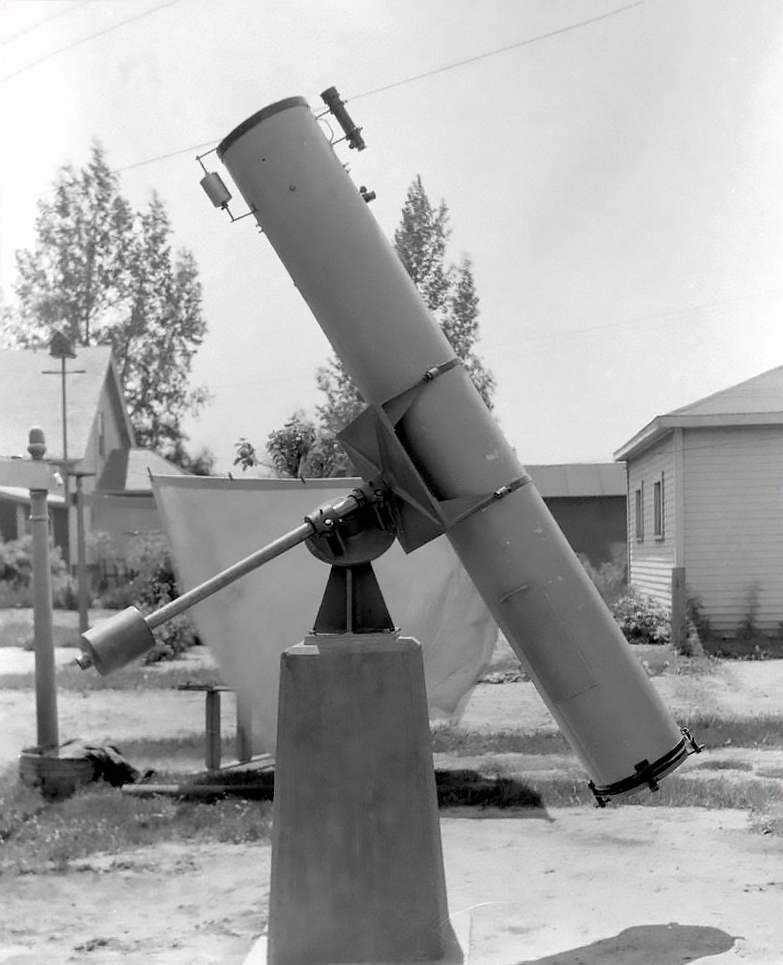 Because of where the offer originated, Armfield called this the Harvard
13 inch Reflector. You can read more of the account written by Armfield in the
MAS Bulletin of October, 1934.
Because of where the offer originated, Armfield called this the Harvard
13 inch Reflector. You can read more of the account written by Armfield in the
MAS Bulletin of October, 1934.
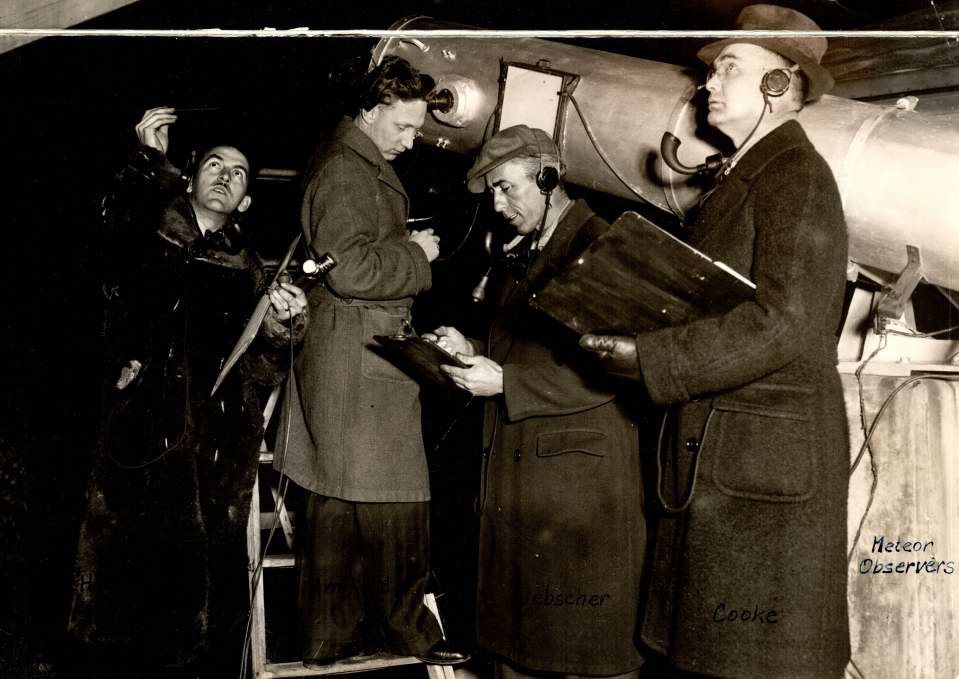 The tube and mount would be hastily completed by July of that year,
although the finished mirror itself would not arrive until October. Because the MAS
at that point did not have the New Berlin observatory (it was in fact, many
years away), they poured the concrete mount in Armfield's backyard so it
could be put to immediate use. Though an offer of land for an observatory in
New Berlin came in December of 1933 by member M. J. W. Phillips, he
stipulated that we could not take possession of the land until there was a
working observatory. Being in the depths of the Great Depression, this would
be a monumental task. The only known telescope upgrade to this scope was the
addition of a red light chart reader placed right of the focuser (seen in
the photo at the above left.)
The tube and mount would be hastily completed by July of that year,
although the finished mirror itself would not arrive until October. Because the MAS
at that point did not have the New Berlin observatory (it was in fact, many
years away), they poured the concrete mount in Armfield's backyard so it
could be put to immediate use. Though an offer of land for an observatory in
New Berlin came in December of 1933 by member M. J. W. Phillips, he
stipulated that we could not take possession of the land until there was a
working observatory. Being in the depths of the Great Depression, this would
be a monumental task. The only known telescope upgrade to this scope was the
addition of a red light chart reader placed right of the focuser (seen in
the photo at the above left.)
A New Home in New Berlin
In late October of 1936, the telescope would be decommissioned because of Armfield's divorce. Not only was this the loss of the telescope for MAS use, it was also a loss of the MAS observatory. However, there were a couple of silver linings: 1) This allowed the telescope and especially the mount to be upgraded as it was so hastily designed and built, and 2) it lit a fire under the club to start development of the land in New Berlin.
In early 1938 the domed observatory was completed and MAS took deed of the property in March. In May the refurbished "Harvard" reflector (now called the "Armfield" reflector) was installed in the observatory. The telescope tube was reworked and considerable work done on the mount. The mirror cell which was made of wood was discarded and a proper one made. The original scope had no clock drive and no setting circles. Also, both RA and Dec axis' were given slow motion control. You can read the details of the upgrades written by Ed Halbach in the June-July issue of Amateur Astronomy.
Telescope Donated
In 1944, Luverne Armfield had to leave the Milwaukee area (and thus the MAS) when he took a job in Ohio. At that time he officially donated his telescope to the society.
A New Mirror and Secondary
In 1960, the 13 inch mirror on loan from the AAVSO was in need of refiguring and realuminizing. Rather than go through that expense, especially because it was plate glass and does not belong to the MAS, they started a fund that year to buy a new 12.5 inch mirror of superb quality from Cave Optical. As a result of that fundraising campaign, $250 was secured for the mirror, diagonal, and a new mirror cell. The old 13 inch mirror was returned to the AAVSO. The new mirror had a focal length of 108.875 inches making the new A-Scope an f/8.71.
The Luverne Armfield Telescope
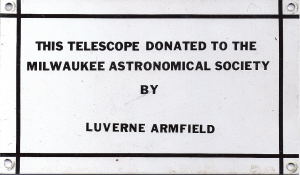 |
In 1963 the MAS Board of Directors officially named the instrument The Luverne Armfield Telescope, purchasing a plaque to be affixed to the concrete pedestal. |
The Edward A. Halbach Telescope
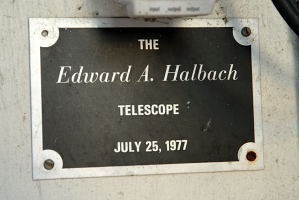 In
1975, various upgrades and fixes were applied to the telescope headed by Ed Halbach. The slow motion controls were updated, new larger setting circles
were installed, and a new paddle, this one containing two additional buttons
to now control the rotation of the dome which was automated in 1975. The
project was completed by the summer of 1977 and shortly after, the Board redesignated the instrument, The Edward A. Halbach Telescope. For a very
short period of time it became known as the H-Scope, but soon everyone
reverted back to calling it the A-Scope.
In
1975, various upgrades and fixes were applied to the telescope headed by Ed Halbach. The slow motion controls were updated, new larger setting circles
were installed, and a new paddle, this one containing two additional buttons
to now control the rotation of the dome which was automated in 1975. The
project was completed by the summer of 1977 and shortly after, the Board redesignated the instrument, The Edward A. Halbach Telescope. For a very
short period of time it became known as the H-Scope, but soon everyone
reverted back to calling it the A-Scope.

